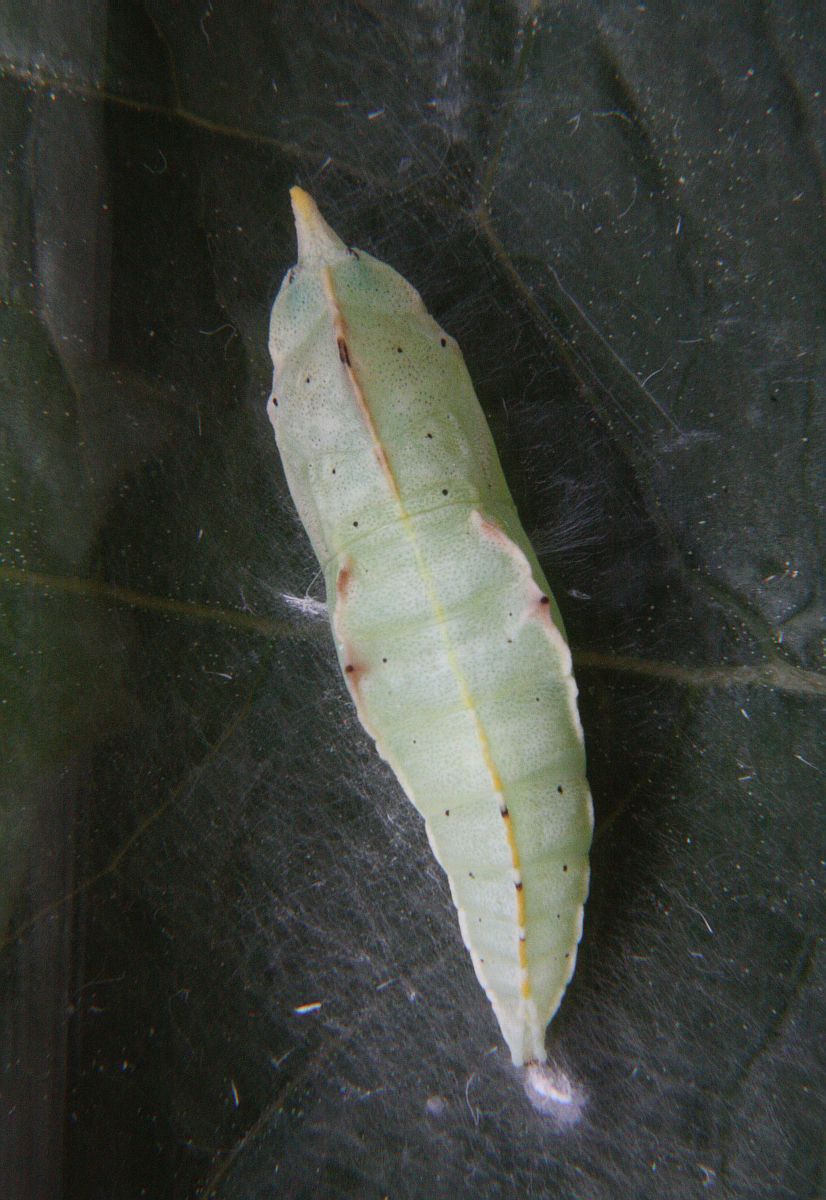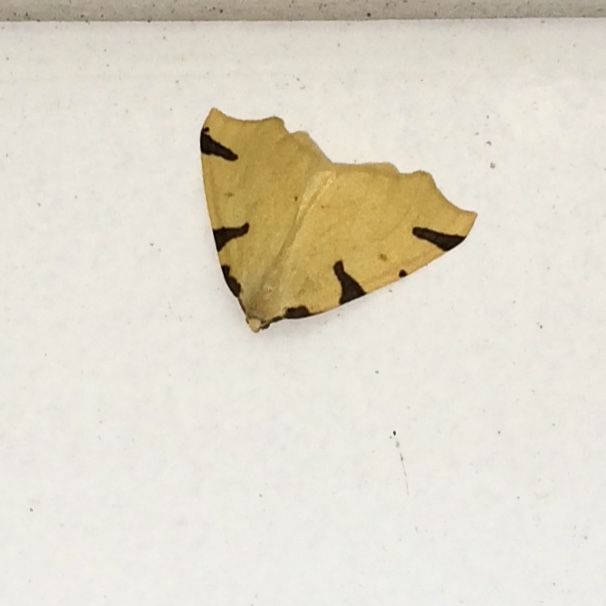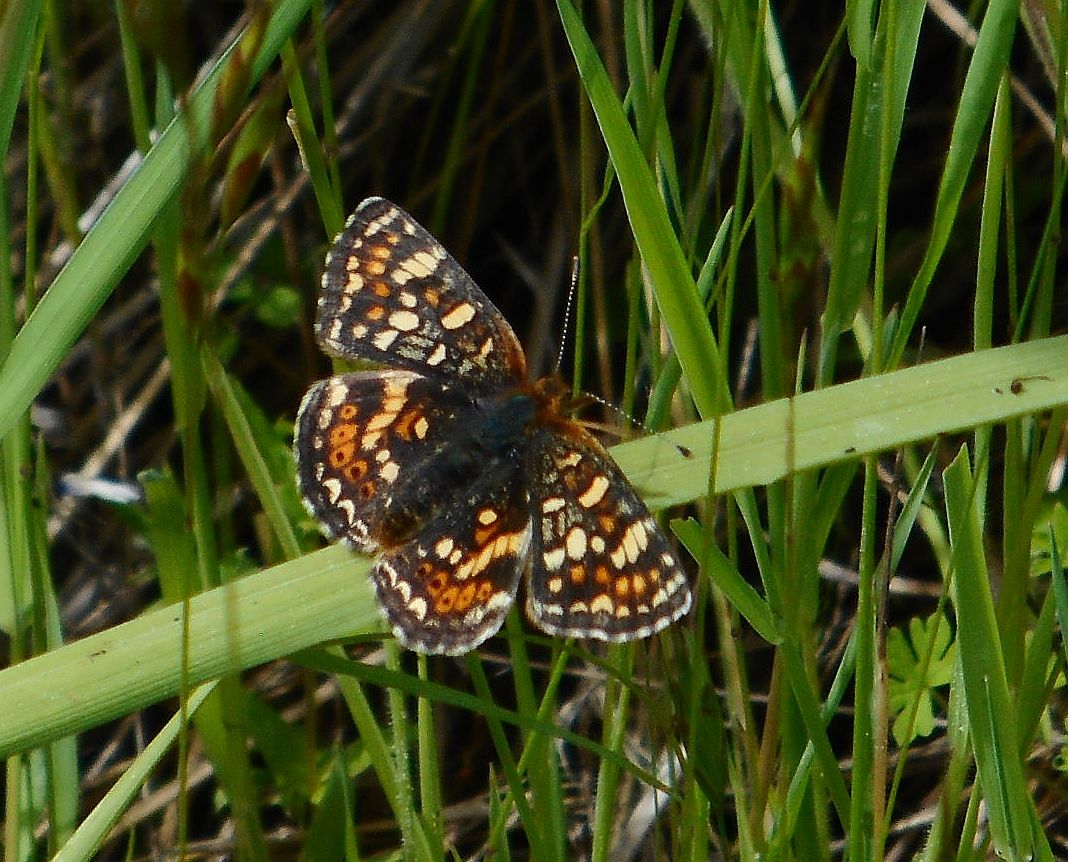May 26
2018 May 26
The Cabbage White caterpillar shown on May 24 has now pupated. Here is its chrysalis:


Cabbage White Pieris rapae (Lep.: Pieridae) Jeremy Tatum
Rebecca Reader-Lee writes: As I arrived home in the North Highlands I found this moth on the door:


Neoterpes trianguliferata (Lep.: Geometridae) Rebecca Reader-Lee
Kirsten Mills writes: Jeff I counted 22 Field Crescents at Eddy’s Storage on Stelly’s Cross Road this afternoon:


Field Crescent Phyciodes pratensis (Lep.: Nymphalidae) Kirsten Mills
Val George writes: My May official butterfly count for Mount Douglas and the surrounding area was done on May 21 and today, May 26. It produced the following: Cabbage White 18, Western Spring Azure 8, Painted Lady 4, Red Admiral 2, Propertius Duskywing 2 (photo), Western Tiger Swallowtail 5, Pale Tiger Swallowtail 1, Anise Swallowtail 2.


Propertius Duskywing Erynnis propertius (Lep.: Hesperiidae) Val George
Correction: Jeremy Tatum writes: On May 25 there was reference to the yellow colour on T2 of Annie Pang’s bee photograph. I suggested that T2 referred to the second thoracic segment, which is the normal notation used to describe a moth caterpillar. This was wrong. Thanks to Jeremy Gatten who pointed out that, in the description of adult insects such as bees and wasps, the notation has a quite different meaning. The abdominal segments of these insects are made of two plates stapled together; the upper plate is a tergite, the lower plate is a sternite. The T refers to the tergite, and the 2 refers to the second abdominal segment. I checked with Lincoln Best, and he confirms that it was this latter interpretation that he intended, which is apparently usual with adult insects.
How you pronounce tergite would occupy another small essay!
When I was editor of a scientific journal I had a strict rule that all abbreviations must be defined on first mention – no exceptions, no ifs, ans or buts. No author was allowed to assume that everyone understood what an abbreviation was intended to mean, or that a particular abbreviation was “standard” and need not be defined. (And by the way, I meant “ans” and not “ands”!)
